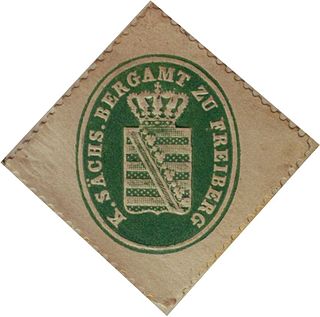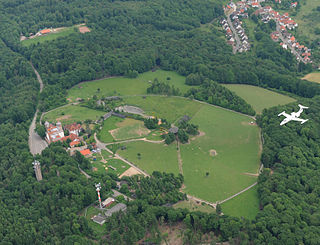Related Research Articles

Kiruna is the northernmost city in Sweden, situated in the province of Lapland. It had 17,002 inhabitants in 2016 and is the seat of Kiruna Municipality in Norrbotten County. The city was originally built in the 1890s to serve the Kiruna Mine.

Kongsberg is a historical mining town and municipality in Buskerud county, Norway. The city is located on the river Numedalslågen at the entrance to the valley of Numedal. Kongsberg has been a centre of silver mining, arms production and forestry for centuries, and is the site of high technology industry including the headquarters of Norway's largest defence contractor Kongsberg Gruppen.

Sandvik AB is a Swedish multinational engineering company specializing in products and services for mining, rock excavation, rock drilling, rock processing, metal cutting and machining. The company was founded in Gävleborg County, Sweden, in 1862. In 2023, it had approximately 41,000 employees and a revenue of 127 billion SEK, with sales in around 170 countries.

A minelayer is any warship, submarine, military aircraft or land vehicle deploying explosive mines. Since World War I the term "minelayer" refers specifically to a naval ship used for deploying naval mines. "Mine planting" was the term for installing controlled mines at predetermined positions in connection with coastal fortifications or harbor approaches that would be detonated by shore control when a ship was fixed as being within the mine's effective range.
Luossavaara-Kiirunavaara Aktiebolag (LKAB) is a state-owned Swedish mining company. The company mines iron ore at Kiruna and at Malmberget in northern Sweden. The company was established in 1890, and has been 100% state-owned since the 1950s. The iron ore is processed to pellets and sinter fines, which are transported by Iore trains (Malmbanan) to the harbours at Narvik and Luleå and to the steel mill at Luleå (SSAB). Their production is sold throughout much of the world, with the principal markets being European steel mills, as well as North Africa, the Middle East and Southeast Asia. LKAB's mines supply at least 80% of Europe's iron ore.
Boliden AB is a Swedish multinational metals, mining, and smelting company headquartered in Stockholm. The company produces zinc, copper, lead, nickel, silver, and gold, with operations in Sweden, Finland, Norway, and Ireland.

Mining law is the branch of law relating to the legal requirements affecting minerals and mining. Mining law covers several basic topics, including the ownership of the mineral resource and who can work them. Mining is also affected by various regulations regarding the health and safety of miners, as well as the environmental impact of mining.

De re metallica is a book in Latin cataloguing the state of the art of mining, refining, and smelting metals, published a year posthumously in 1556 due to a delay in preparing woodcuts for the text. The author was Georg Bauer, whose pen name was the Latinized Georgius Agricola. The book remained the authoritative text on mining for 180 years after its publication. It was also an important chemistry text for the period and is significant in the history of chemistry.

Jörg Bergmeister is a former racing driver from Germany and an ambassador of Porsche.

The Reichskommissariat Norwegen was the occupation regime set up by Nazi Germany in German-occupied Norway during World War II. Its full title in German was the Reichskommissariat für die besetzten norwegischen Gebiete. It was governed by Reichskommissar Josef Terboven until his deposition on 7 May 1945. The German military forces in Norway, then under the command of general Franz Böhme, surrendered to the Allies on 9 May and the legal government was restored.

The Saxon Mining Office is the executive authority for mining rights in the German state of Saxony. It is also responsible for all non-metallic mineral resources on the terrain of the former East Germany.

The Saint Sava Serbian Orthodox Church is a Serbian Orthodox church in Jackson, California. Built in 1894, the church was the first Serbian Orthodox church in America. Amador County had a large Serbian-American population in the late 1800s due to the California Gold Rush, and the county's Serbs established the St. Sava Church Organization of Amador County in 1886–87; the organization was responsible for purchasing land for and building the church, and the effort was led by Sevastijan Dabović. The church's original design had an Eastern Orthodox influence, complete with an onion dome; while the dome was later replaced by a bell tower, the church's stained glass windows and use of icons still give it a distinctive Eastern Orthodox character. The church has been used for Serbian-American religious and social activities since its opening and is now part of the Serbian Orthodox Eparchy of Western America.

A Steiger is the title of a mining foreman or mine manager, used in German-speaking Europe. He bears responsibility for part of the mine and the people subordinated to him. The name is derived from the former role of a Steiger, who continually had to climb into and out of the pit. The Steiger is celebrated in a very popular German mining song the so-called Steigerlied.

The Bergregal was the historic right of ownership of untapped mineral resources in parts of German-speaking Europe; ownership of the Bergregal meant entitlement to the rights and royalties from mining. Historically, it was one of those privileges that constituted the original sovereign rights of the king.
The main purpose of mining acts in law is to govern the structure of mining authorities and their responsibilities, the entitlement to mining and the oversight of safety in and around the mines. With the introduction of parliamentary legislative powers, they replaced the earlier mining regulations issued by royalty or nobility to their states and territories.

A hewer is a miner who loosens rock and minerals in a mine. In medieval mining in Europe a Hauer was the name given to a miner who had passed his test (Hauerprüfung) as a hewer.

Timo Bernhard is a former racing driver from Germany. He was a sports car driver from Porsche, but was seconded to Audi for selected events in 2009 and 2010. He is the ninth and most recent driver to complete the informal triple crown of endurance racing. On 29 June 2018, he became the first person in 35 years to break the all-time Nürburgring Nordschleife lap record, set by Stefan Bellof in 1983 with a Porsche 956, in a derestricted Porsche 919 Evo with a time of 5:19.546.

The Potzberg, known as "King of the Westrich", is a wooded hill, 562 m above sea level (NHN) (1,844 ft), in the North Palatine Uplands in the German state of Rhineland-Palatinate.

The mining industry in Sweden has a history dating back 6,000 years.

Friedrich Wilhelm Heinrich von Trebra was a mining officer in Saxony. He took an interest in geology and was a friend of Johann Wolfgang von Goethe who worked in Ilmenau. He was involved in the recovery of Saxon mining following the Seven Years' War.
References
- ↑ Heinrich Veith: Deutsches Bergwörterbuch mit Belegen. Verlag von Wilhelm Gottlieb Korn, Breslau 1871
- ↑ Max Joseph Gritzner: Commentar der Ferdinandeischen Bergordnung vom Jahre 1553. Bei Praumüller und Seidel, Wien 1842
- ↑ Jan-Olof Hedström: ...igenom gode Ordningar och flitigt upseende... Bergsstaten, 2012, ISBN 9789174031805